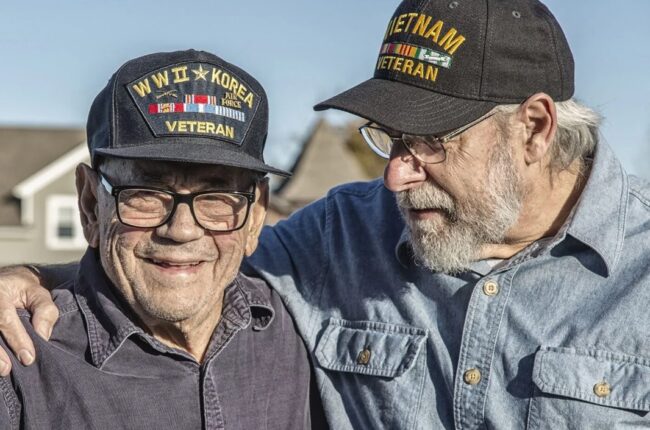The navy base, Camp Lejeune, located in North Carolina, has faced immense backlash since the 1980s. It resulted from the water contamination event, affecting over 1 million residents.
Between 1953 and 1987, researchers found volatile organic compounds (VOCs) in two water treatment plants, Hadnot Point and Tarawa Terrace. This contamination resulted from illegal waste disposal methods by an off-base dry cleaning company called ABC One-Hour Cleaners.
Therefore, the camp’s water became contaminated with harmful chemicals. Examples include dry-cleaning solvents, degreasers, etc. Exposure to them caused residents to develop cancer, ALS, non-Hodgkin’s lymphoma, fertility issues, etc.
Unfortunately, the government knew of such disposal methods but didn’t do anything about them. That’s why multiple Camp Lejeune lawsuits came into the picture. The victims wanted justice for the personal injuries caused, the negligence they endured, greedy corporate misconduct, and wrongful deaths.
Since its filing, the lawsuit has brought many changes to the administration. For instance, the federal government passed a new law, and different compensation options emerged.
In this blog, we’ll discuss one payment option that every Camp Lejeune victim should know about.
Should Veterans Choose EO to Gain Quick Settlements?

The Department of Justice (DOJ) and the Navy collaborated and announced a new settlement payout system in late 2024. Called the Elective Options (EO), this could potentially help address months of setbacks in the litigation.
With the EO, the victims could receive up to USD 550,000 in payouts. However, it depended on their injuries and illnesses. This payout aims to offer the following benefits:
- A sped-up process for people with terminal illness
- It will influence payouts for those who lived in the camp for only thirty days
- EO requires victims to provide less evidence to gain compensation
- It aims to simplify the eligibility criteria
Veterans should choose an EO payout plan to gain faster relief. This can help them overcome the initial challenges they faced with the original claims.
Elective Options Criteria in the Litigation
The Camp Lejeune Justice Act (CLJA) from last year became a beacon of hope for many veterans. It allowed affected individuals to file new lawsuits against the responsible parties, including the government.
In the CLJA, veterans residing in the camp for at least thirty days or more could seek compensation for personal injuries due to toxic exposure. According to TorHoerman Law, participation in CLJA wasn’t limited to just the veterans. Instead, CLJA allowed family members to file claims for deceased veterans exposed to toxic water. It truly changed the litigation for good.
Like that, the EO aims to change the litigation outcome for everyone. However, the compensation will depend on the evidence linking the veteran’s illnesses to the toxins.
Basic Criteria
Victims can gain benefits from EO if:
- They received their diagnosis before the 10th of August, 2022
- They stayed at the navy camp for thirty days
- They had qualifying health issues that are scientifically related to contamination
The Illness Tiers
In the EO, only people suffering from nine main diseases or illnesses are eligible for claims. These are:
- Tier 1 includes liver cancer, kidney cancer, bladder cancer, leukemia, non-Hodgkin’s, and lymphoma. Victims can get up to USD 450,000.
- Tier 2 includes Parkinson’s, end-stage renal failure, multiple myeloma, and scleroderma. Victims can receive up to USD 400,000.
Plaintiffs in Tier 2 can file for wrongful death claims and get an additional compensation of USD 100,000.
Unqualified Illnesses in Elective Options

Female fertility issues, stillbirths, miscarriages, etc., are not covered by the EO. Even though the CLJA covers them, victims with these issues are ineligible for quick settlements and relief under the EO.
Janey, born to retired Marine Jerry Ensminger, died at the tender age of 9 from leukemia. Studies have linked such deaths to chemical exposure at the camp. Examples include low birth weight, fetal deaths, ovarian cancer, etc. Hence, this limitation was a shock to many.
Similarly, EO doesn’t cover lung cancer, breast cancer, esophageal cancer, and fatty liver disease. Even dementia and depression are excluded from the tiers.
All this proves that EO cannot help all the victims of Camp Lejeune contamination. Hence, they should rely on the original claims process.
What Happens When Victims Are Not Eligible for EO?
As mentioned, victims who don’t qualify for EO payouts can choose the original claims process. However, if their claims are denied or remain unaddressed for six months or more, they can take legal action against the federal court.
Technically, the original claims process includes the following steps:
- Carry out the initial administrative process and contact a VA regional office to file the claim.
- Gather evidence, like medical records and proof of residence, linking personal injury to the Camp Lejeune water contamination incident.
- If rejected, hire a lawyer to analyze the situation and file a disability claim with the Eastern District of North Carolina.
Either way, victims of Camp Lejeune should hire a legal representative if they want to receive hefty compensation of up to USD 500,000.
A lawyer will diligently perform all the strenuous legal work and gather incriminating evidence to strengthen the case. They will take witness statements and contact healthcare professionals before appearing in front of a jury.
Needless to say, a Camp Lejeune attorney will fight for justice and help veterans get the compensation they deserve. Even though victims are asked not to expect quick payouts, they can be hopeful for a positive outcome.
Summing Up

The Camp Lejeune claims are yet to come to a settlement, and the victims are yet to receive their payouts. They have waited over 25 years, and it’s high time they receive justice and the compensation they deserve.
That’s why federal officials have started to make a move on the Camp Lejeune claims based on Tier 1 and Tier 2 EO.
The legal industry believes individual claims can be between USD 10,000 and USD 500,000. According to Bloomberg Law, the estimated claims have already reached USD 3.3 trillion. With that, this decade-long battle could be nearing its end.
